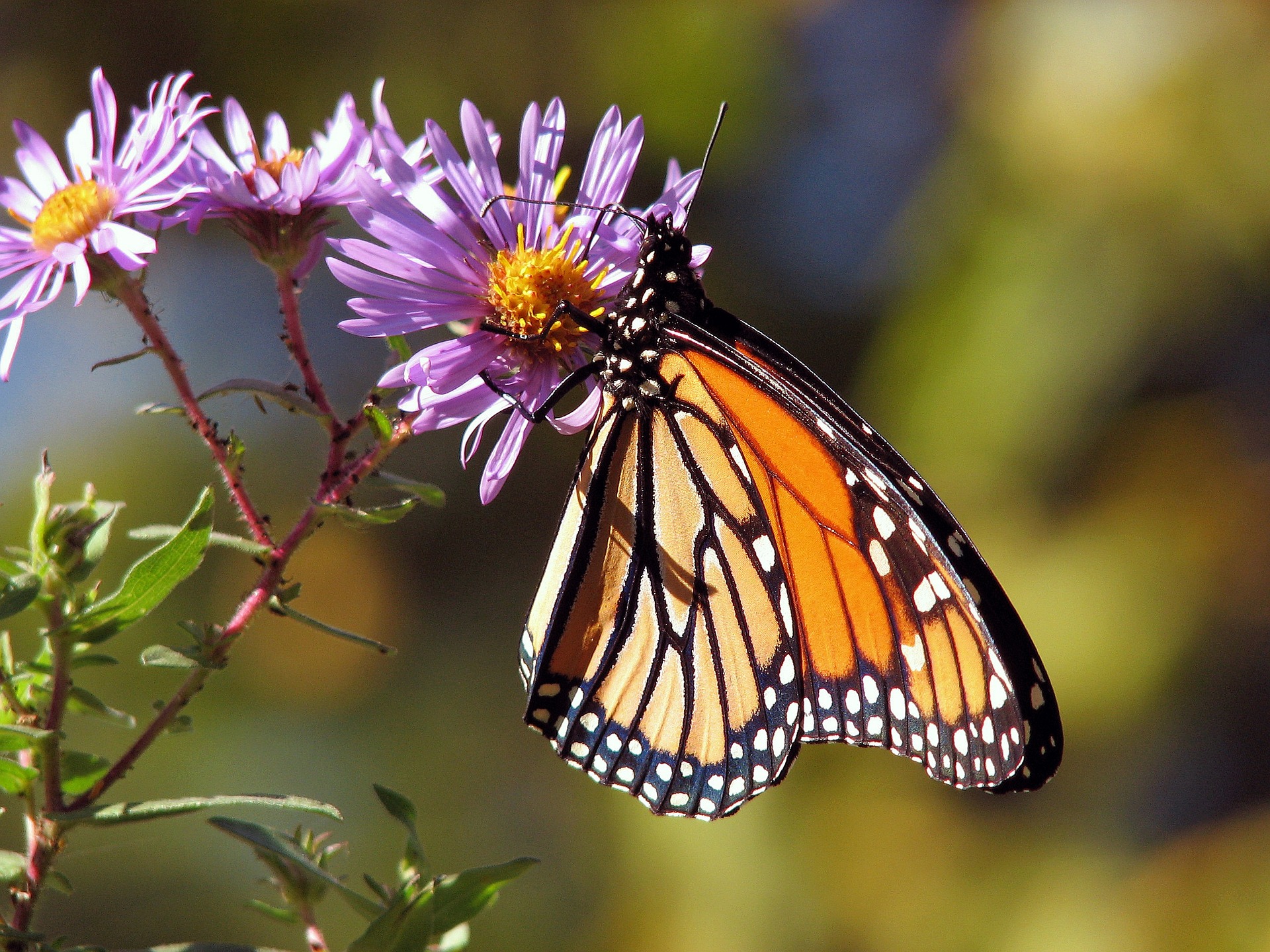There is something about butterflies that instill a deep sense of wonder. They appear to us as fuzzy caterpillars found along the stems and leaves of garden plants. Then, at a certain time, they spin a delicate silk cocoon that becomes their home for many weeks to become a delicate butterfly. This story has captivated the imagination of children for ages.
Butterfly gardening is a wonderful opportunity to see them interacting with the environment. With a little planning, it is easy to create the conditions for butterflies to be attracted to a backyard or patio.
They prefer south-facing spaces that are protected from wind because they need the sunshine for energy. They are prolific pollinators that benefit fruit trees, vegetables, and flowers. They will feed mostly on rotting fruit, sap, nectar, and some plant matter. The types of plants you choose will determine in part the types of butterflies you can expect to see. The specific varieties of plant they prefer can be easily found online.
Butterflies are attracted to the carbon dioxide produced by decomposing fruit. A feeding station can be made by creating the fermentation environment they love. A mash of spoiled fruit and sugar water is a basic starter recipe for making CO2. After a week or so, it is ready to introduce to your garden. To attract Monarch butterflies, transplant milkweed stalks from a local wooded area, as this is their primary food source.
The landscape of a butterfly garden should be varied with features such as stones, shrubs, bare soil, and perhaps a short section of a log that is allowed to decompose naturally. This will duplicate the meadow-edge environment that appeals to butterflies. They like to hide or nest among foliage, especially at night, so provide enough cover for them.
Male butterflies engage in an activity called “puddling,” or gathering salt from the soil to enhance their reproductive capabilities. A puddling station doesn’t need to be large; in fact, they can be as simple as keeping a small wet spot in your garden. A drip attachment on a buried garden hose will keep the soil moist enough for puddling but not flooded.
Ideally, gardens are created as symbiotic environments in which humans, plants, and insects live together for mutual benefit. Plant flowers for cutting that will naturally attract butterflies. Sunflowers, black-eyed Susans, and lavender are easy to grow and have a practical use in the home. When it comes to edibles, they like the foliage of carrots, tomatoes, squashes, and berries.
With some basic preparation, it’s easy to have a lovely garden full of butterflies this spring and summer.
Contact us at Pemberton Holmes to view properties with yards and room to grow. Call 1 250 746-8123.





